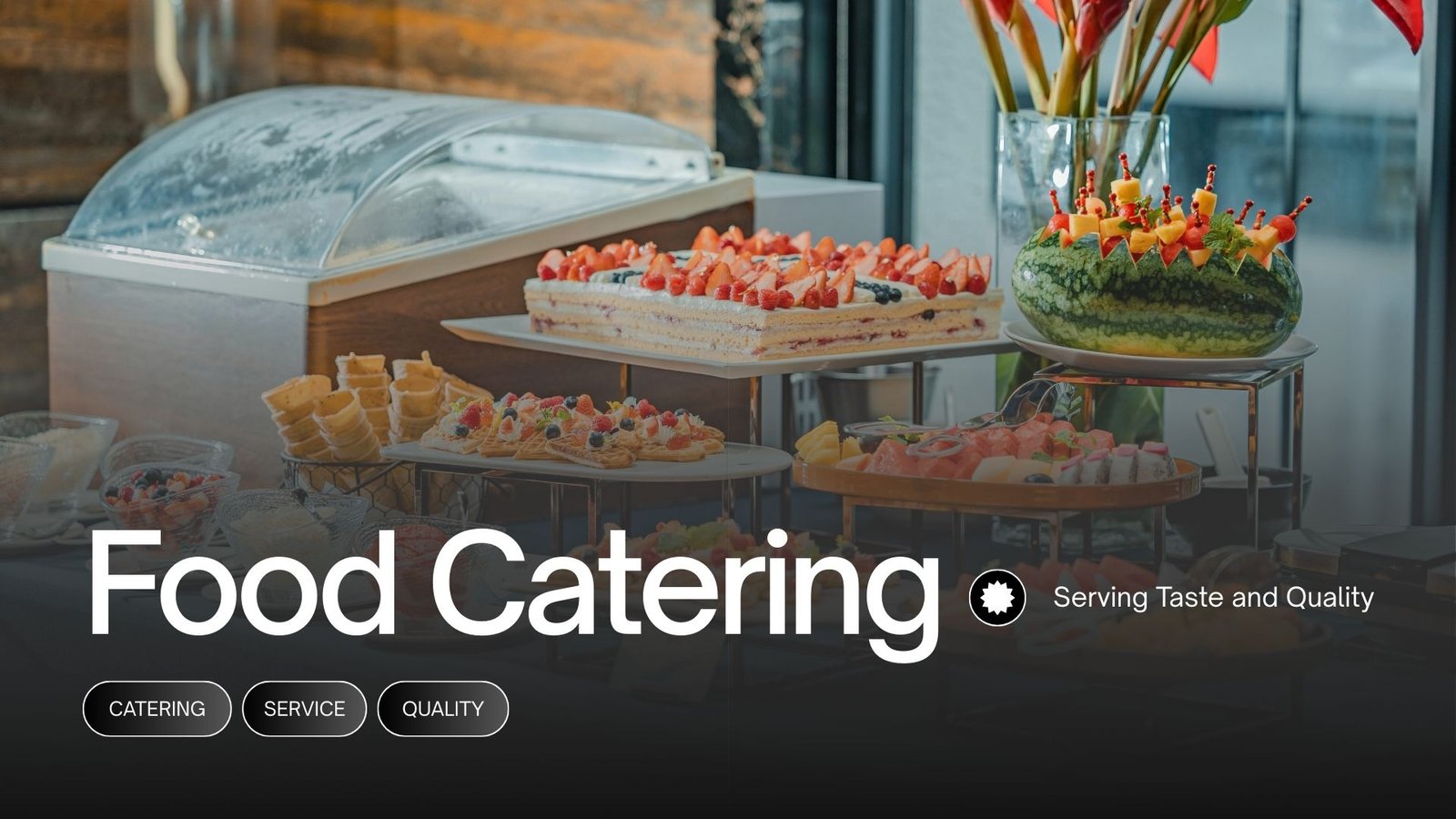Understanding Inflight Catering
Inflight catering refers to the preparation and delivery of food and beverages served to passengers and crew members during a flight. It is one of the most important aspects of airline service, designed to provide comfort, satisfaction, and convenience to travelers. Every meal served onboard is carefully planned, cooked, packed, and delivered under strict hygiene and safety standards. Airlines partner with specialized inflight catering companies that handle everything from ingredient sourcing to meal presentation.
Inflight catering not only fulfills the basic need for food during travel but also reflects the airline’s brand image. The quality of onboard meals often influences passengers’ overall travel experience. Therefore, airlines invest significant effort in designing menus that meet diverse cultural preferences, dietary requirements, and regional tastes.
The Evolution of Inflight Catering
Inflight catering has come a long way since its early days. Initially, airlines offered simple snacks and beverages, but as aviation grew, so did passenger expectations. The first inflight meal was served in 1919 on a flight from London to Paris. It consisted of cold sandwiches and fruit baskets. Today, inflight catering is a highly organized global industry with advanced facilities, refrigeration systems, and specialized kitchens located near airports worldwide.
Modern inflight catering involves detailed planning, from menu design to packaging. Meals are often prepared several hours before the flight, chilled, and loaded onto aircraft in specialized containers. Airlines now collaborate with renowned chefs to design menus that maintain taste and quality even at high altitudes. The emphasis has shifted from basic sustenance to creating a pleasant dining experience above the clouds.
Importance of Inflight Catering for Airlines
For airlines, inflight catering is more than just a meal service—it’s a branding opportunity. A well-designed inflight catering program can enhance customer loyalty, improve passenger satisfaction, and differentiate one airline from another. Quality meals create a lasting impression, especially on long-haul flights where food plays a key role in comfort.
Additionally, inflight catering allows airlines to showcase regional specialties and cultural diversity. For instance, Middle Eastern airlines often highlight Arabic delicacies, while Asian carriers serve a blend of regional flavors. Offering personalized meal options, such as vegetarian, diabetic, or gluten-free dishes, further strengthens an airline’s reputation for care and inclusivity.
How Inflight Catering Works Behind the Scenes
Behind every inflight meal lies a well-coordinated process involving multiple teams. The inflight catering process typically follows these steps:
-
Menu Planning: Airlines and catering companies collaborate to design menus that balance nutrition, taste, and presentation. The menu often changes seasonally.
-
Procurement of Ingredients: Fresh and quality ingredients are sourced from trusted suppliers, often near the airport to maintain freshness.
-
Preparation and Cooking: Dishes are prepared in large-scale kitchens equipped with advanced tools and temperature control systems.
-
Packaging and Storage: Meals are packed in oven-safe trays or containers and stored in temperature-controlled environments.
-
Delivery to Aircraft: The meals are transported in specialized catering trucks and loaded onto aircraft shortly before departure.
-
Serving Onboard: Cabin crew reheat and serve the meals during the flight, ensuring proper temperature and presentation.
This precise workflow ensures that every passenger receives safe, tasty, and hygienic food, no matter how long the journey is.
Menu Design in Inflight Catering
Designing a menu for inflight catering requires careful consideration. Since taste perception changes at high altitudes—due to cabin pressure and dry air—flavors need to be stronger than usual. Meals must be rich in aroma, balanced in salt, and appealing in presentation even after reheating.
Inflight catering menus often include multiple meal types: breakfast, lunch, dinner, and light snacks. Depending on the flight duration and class of travel, options may include cold starters, hot main courses, and desserts. Beverages such as juices, tea, coffee, and soft drinks complement the meals.
For business and first-class passengers, inflight catering may include gourmet dishes, fine wines, and personalized plating. In contrast, economy class meals are designed for convenience, taste, and nutrition. Every meal must be approved by quality teams before it reaches the passengers.
Hygiene and Safety Standards in Inflight Catering
Food safety is a non-negotiable part of inflight catering. Caterers follow strict hygiene protocols and international aviation standards such as HACCP (Hazard Analysis Critical Control Point) and ISO certifications. All kitchen staff wear protective gear, and every surface is sanitized regularly.
Meals are prepared in temperature-controlled environments to prevent bacterial growth. Ingredients are inspected for quality before use, and cooked food is stored under refrigeration until loaded. During transportation, catering trucks maintain strict cold-chain systems to preserve freshness. Airlines also conduct regular audits to ensure compliance with global safety standards.
Sustainability in Inflight Catering
With growing environmental awareness, sustainability has become a central focus in inflight catering. Airlines are moving towards eco-friendly packaging, waste reduction, and locally sourced ingredients. Single-use plastics are being replaced with biodegradable or compostable materials.
Some inflight catering providers have introduced systems to measure and reduce food waste by analyzing consumption patterns. Using seasonal and local produce also minimizes carbon emissions associated with long-distance transportation. Through such practices, inflight catering is becoming more environmentally responsible while maintaining quality and service standards.
Challenges in Inflight Catering
Despite technological advancements, inflight catering faces several challenges. Maintaining food freshness, ensuring timely delivery, and meeting diverse passenger preferences are constant hurdles. Catering teams must coordinate with airport authorities, airline staff, and logistics providers to ensure smooth operations.
Another major challenge is maintaining consistency. With hundreds of flights operating daily, caterers must deliver meals of the same quality across multiple destinations. In addition, changing regulations, ingredient availability, and unexpected flight delays can disrupt schedules. Adapting to these challenges requires precision planning and strong teamwork.
Role of Technology in Inflight Catering
Technology has transformed inflight catering operations. From automated inventory tracking to AI-based menu planning, digital tools are now central to efficiency. Modern inflight catering systems use data analytics to forecast meal demand, minimize waste, and track passenger preferences.
Some caterers use smart kitchens equipped with sensors and monitoring devices that ensure accurate temperature control. Digital ordering platforms also help airlines customize meal selections for passengers with special dietary needs. This integration of technology not only enhances food quality but also improves overall coordination between airlines and catering providers.
Future Trends in Inflight Catering
The future of inflight catering looks innovative and customer-focused. Airlines are experimenting with healthier meals, plant-based options, and fresh ingredients. Personalized dining experiences, where passengers can pre-order meals online, are becoming more common.
Additionally, technology-driven kitchens and AI-supported systems will continue to simplify logistics. Sustainability will remain a strong focus, pushing caterers to reduce waste and use renewable packaging.
Why Inflight Catering Matters to Passengers
For passengers, inflight catering is more than just a meal—it is part of the journey’s comfort. A delicious and well-served meal can make long flights more enjoyable and reduce travel fatigue. Good food creates a sense of satisfaction and often leaves a positive impression of the airline.
Conclusion
Inflight catering represents the art of combining hospitality, logistics, and culinary expertise in a challenging environment. It requires precision, creativity, and dedication to deliver quality meals at 35,000 feet. From menu design and hygiene management to sustainability and technology integration, every element plays a role in shaping the dining experience onboard.




Leave a Reply